Fancy Flowers, Tulips & Besler’s at the Newport Flower Show! Our antique Basilius Besler engravings, published 1613-1713. In 2022 we acquired an exceptional collection of 300 year-old Beslers. See some in the shop: Newport RI. We sell antiques over 100 year old: hand-colored copper plate engravings and lithographs of all kinds of flowers.



Shop for antique prints, in our Bowen’s Wharf, Newport RI Gallery, or buy from our online inventory. Either way, you are doing business with known, American antique prints dealers, that sell antiques, over 100 years old.
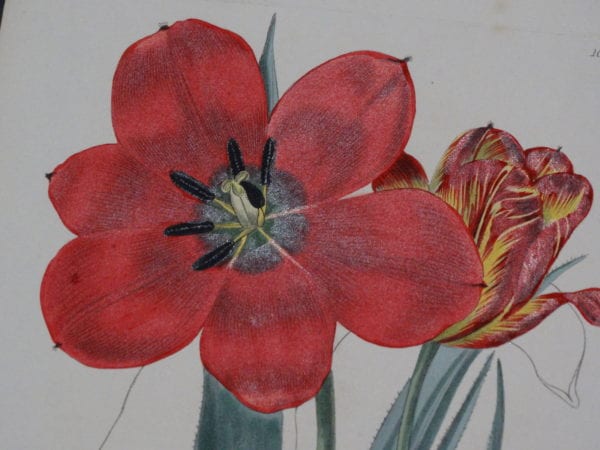
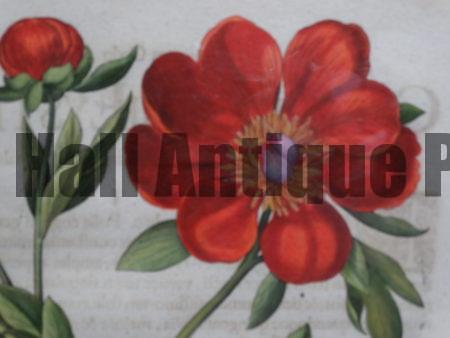
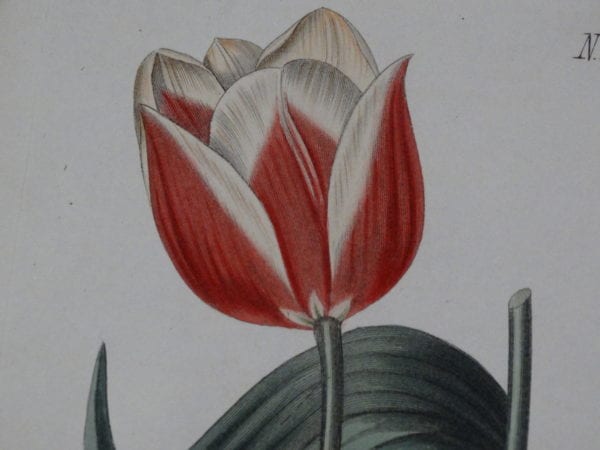
Fancy Flowers: Engravings from 1613-1713, Basilius Besler’s, Hortus Eystettensis sive Diligens et accurata omnium Plantarum Florum Stirpium.
1613-1713 Basilius Besler’s Hortus Eystettensis sive Diligens et accurata omnium Plantarum Florum Stirpium. All three editions of Hortus Eystettensis published in Eichstatt and Nuremberg Germany between 1613 and 1713. The work was to illustrate the fancy flowers in the Prince Bishops own gardens in Eichstatt. This garden is where the bishop could go to be closer to heaven. Here he could praise God and celebrate the diversity of God’s creation.

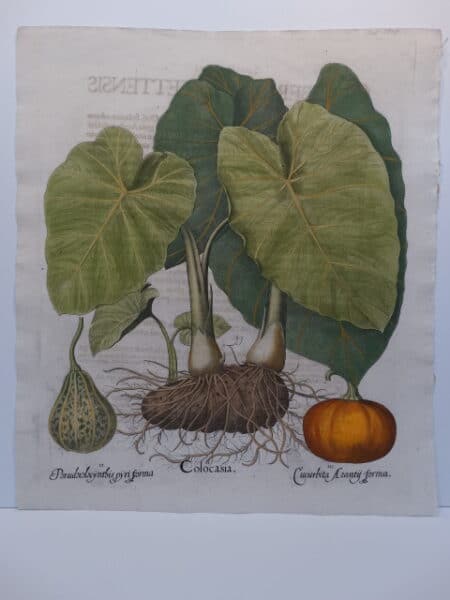
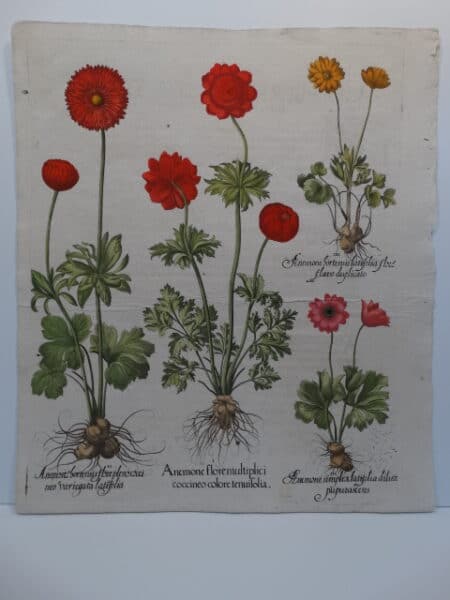
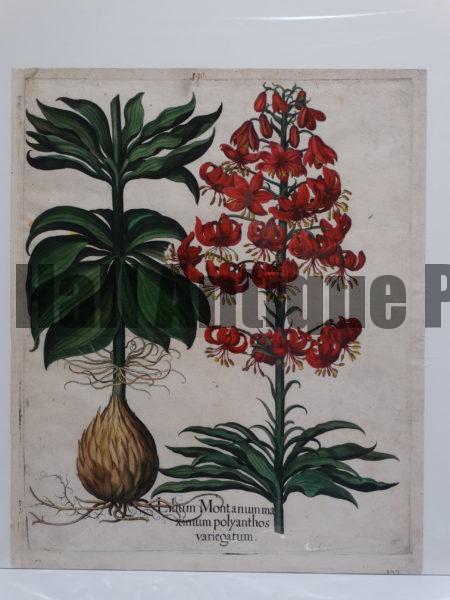
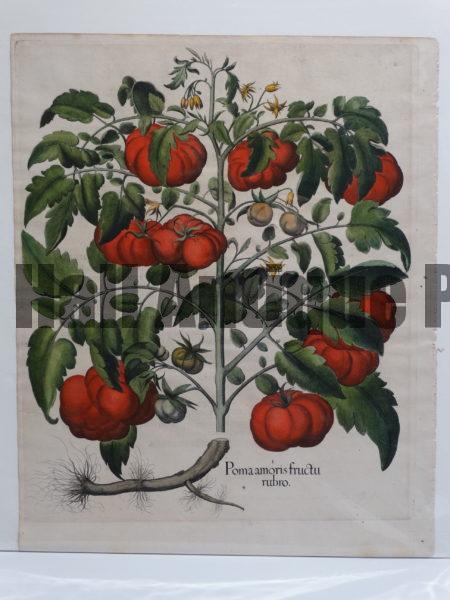
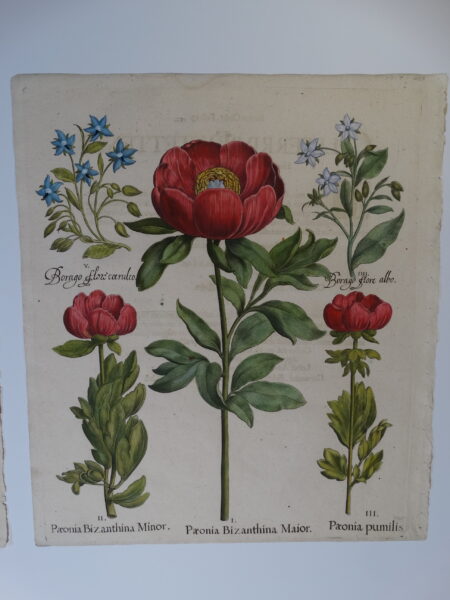
From Basilius Besler’s Hortus Eystettensis. Sold.
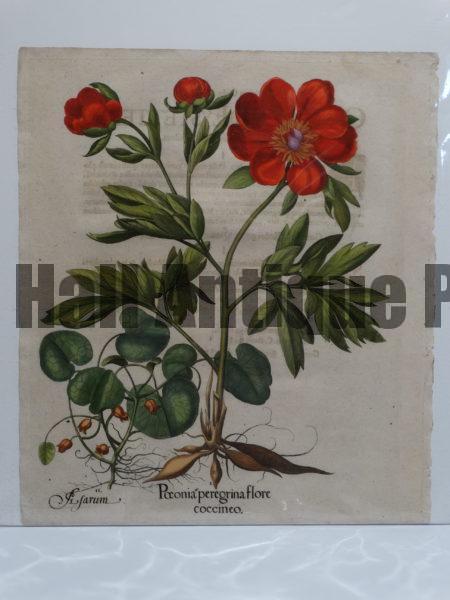
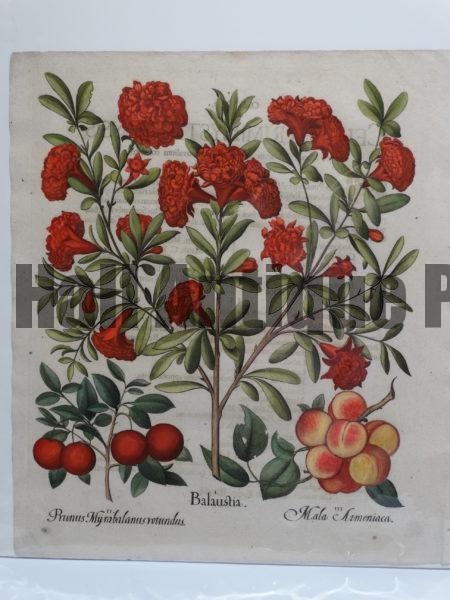
In 1613 Basilius Besler’s First Edition of Hortus Eystettensis Published
In 1613 Basilius Besler published the first edition of Hortus Eystettensis sive Diligens et accurata omnium Plantarum Florum Stirpium. Universally agreed as the important botanical work published. The focus is, the fancy flowers in the gardens of the Bishop of Eichstatt, Germany.
The first edition of Besler’s Hortus Eystettensis published in two different versions. 25 copies issued with original watercolors which sold for 500 florins. This version has no text on the reverse. It started on the next page. In the other version, additionally approximately 300 more copies printed which issued in black-and-white. Intended for apothecaries, doctors and others. This version starts with text on the reverse of the botanical engraving. In comparison the black-and-white version sold for up to 48 florins.
Basilius Besler’s Second Edition of Hortus Eystettensis Published 1640
The second edition of Basil Besler’s Hortus Eystettensis published 1640 in Eichstatt, Germany. A serpent watermark is in most of the paper. The second edition was only issued in black-and-white. There is some conflicting and lack of information about this edition: most say there is no printing on the verso while some reputable sources note there was. I will research this more at a later time.
Basilius Besler’s Third Edition of “Gardens of Eichstatt” Published 1713
In 1713 Basilius Besler’s work was published for a third time. Entitled Hortus Eystettensis sive Diligens et accurata omnium Plantarum Florum Stirpium. Again published Nuremberg and Eichstatt, Germany. There is printing on the verso, and the paper is thicker. Paper making had evolved in the previous century. This edition published in black and white. Meaning the watercolors have been added sometime since to pieces you see in color.
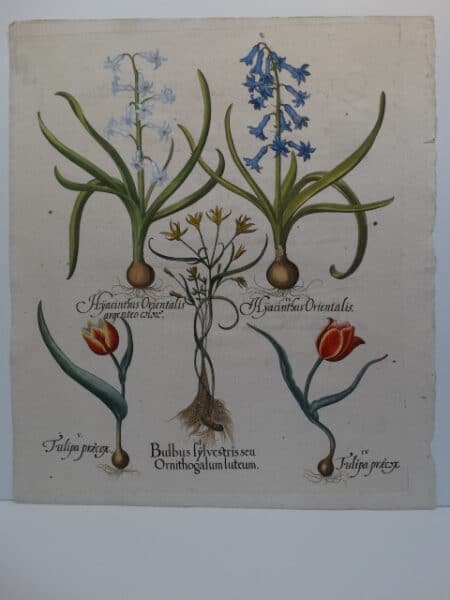

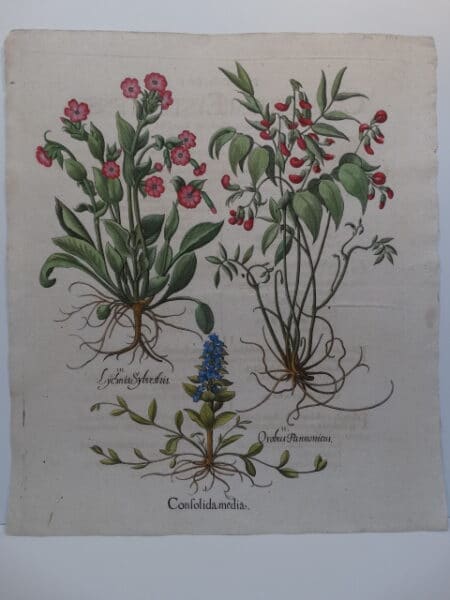
More about the 1st important botanical work in history:
Eight magnificent sections of “Eichstatt Gardens” were filled with incredible fancy flowers. The elaborate gardens surrounded the castle of Prince Bishop. Basilius Besler was an apothecary as well as an artist and he was selected to illustrate these important gardens. In medieval it was common for people in the medical field to know a lot about botany. There were many objectives about gardening to address. What was desirable, valuable, rare, which had medicinal values? Besler’s job to illustrate 367 different plates depicting over 600 fancy flowers. All located in the Prince Bishop’s gardens according to four seasons. After all medieval times had just passed. It was the turn of the 17th century. A time for growing out of the medieval age. Moreover a time for discovery and enlightenment powered by the money behind the church. Learn more at the British Library or see the book by visiting Biodiversity Heritage Library.
Fancy Flowers: A Pair of Antique Tulip Lithographs, Framed
From our show collection, we are pleased to offer this magnificent pair of antique tulip lithographs which were published in Belgium from 1845-1888. Published for Flore de Serres, the top horticultural nursery catalog during the mid to late 19th Century, the renditions exacted, lifelike details. The stunning lithographs were printed in colors from limestone plates and water colored by hand to finish them off. Theses tulips are the two single best pieces in the entire series. Each piece was issued folded into the catalog and is framed in archival materials including 100% cotton matting, complete with UV glass. Anne framed them in gold leaf over red paint picture frames. Each piece measures 22×26.” $2400/Pair. Call Anne at 413-245-4197.
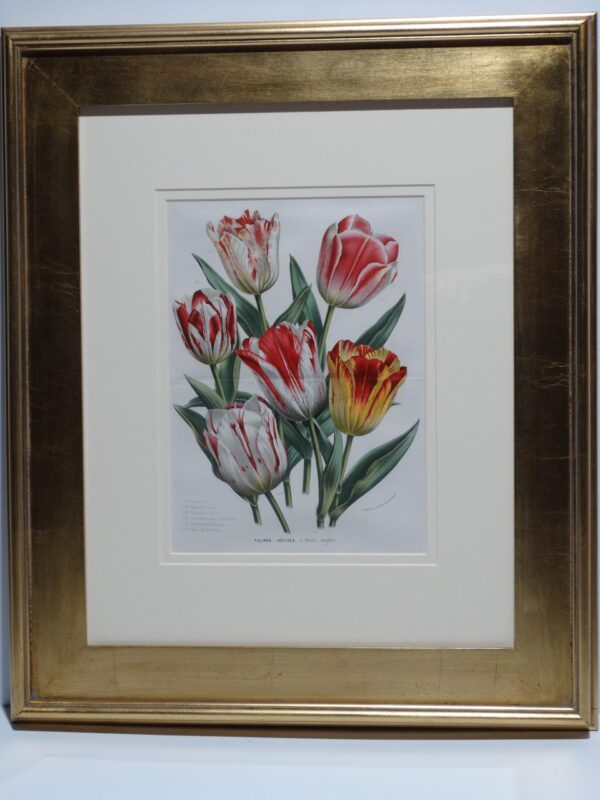

19th Century Antique Tulip Lithograph with Gold Leafed Frame
Consider this special gift for someone who loves tulips. A 19th Century framed antique tulip lithograph. With watercolor finishing. Published by the largest nursery on the continent in Belgium 1845-1888. Measurement: 17×20″ framed. $650. Call Anne at 413-245-4197 to place your order.
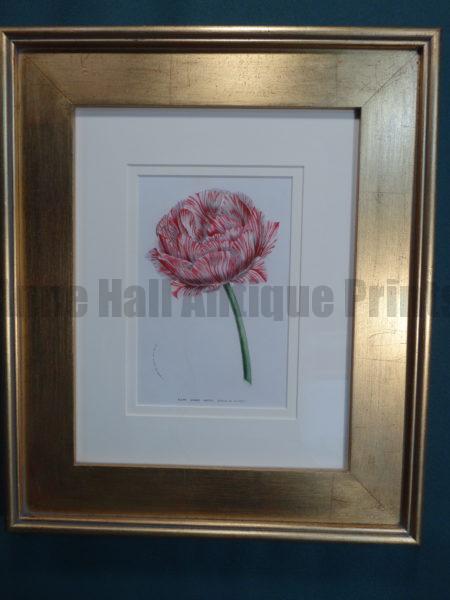
Tulipmania: American Shop for Antique Tulip Engravings
Tulips are the most important of all fancy flowers. That was determined early in History by the Dutch and at one time one tulip plant sold for 3000 pieces of gold. These depictions are iconic examples of antique botanical illustration. These are English water colored copper plate engravings on handmade paper. It is the work of Curtis, Edwards and Sweet and they date to the early 1800’s. Each print was individually dated when it was published for the magazine, they were featured in. Measurements are about 5×9.” STUNNING MAGNIFICENT COLORS!!! Get personalized service from Anne by calling 413-245-4197.
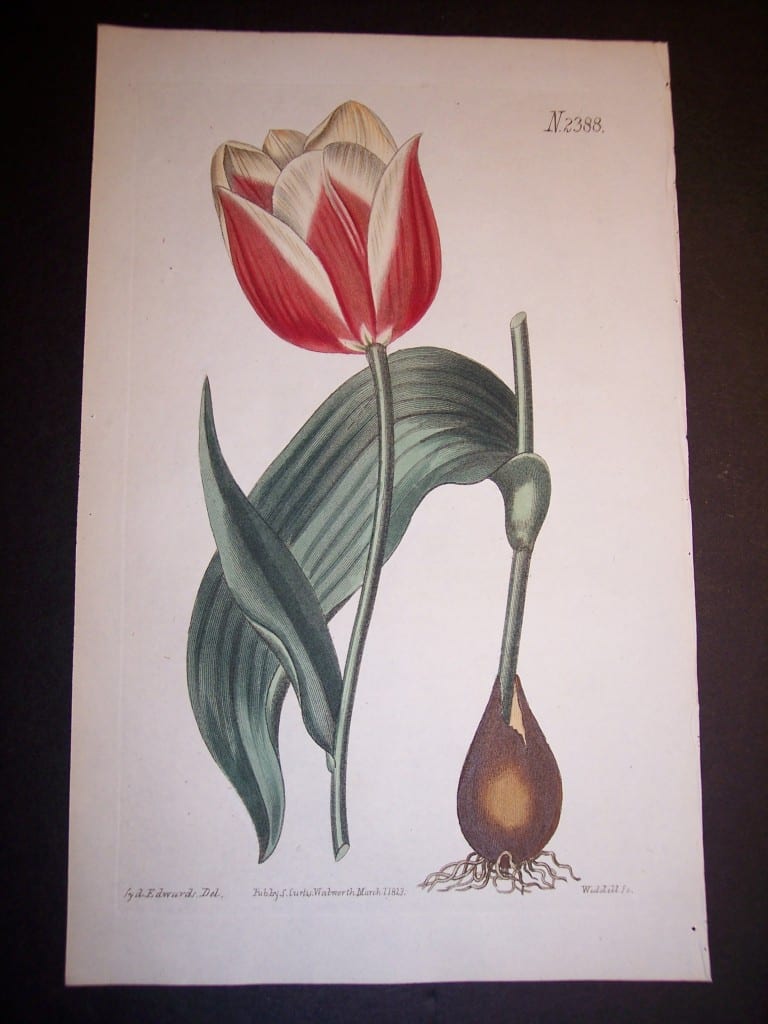


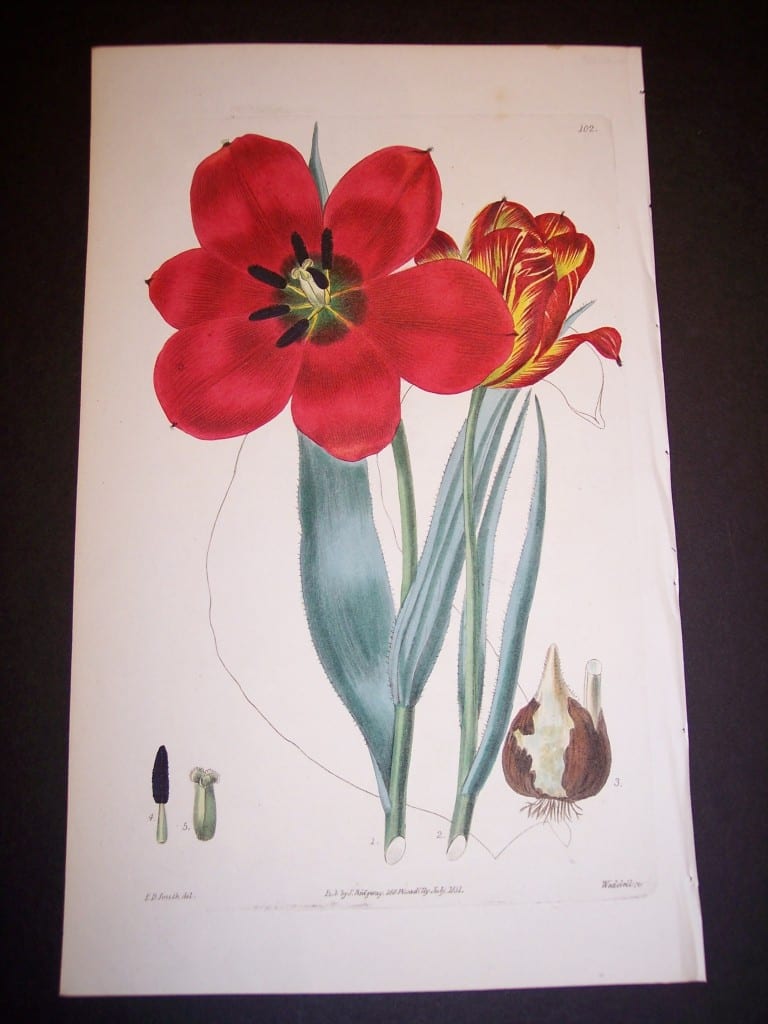
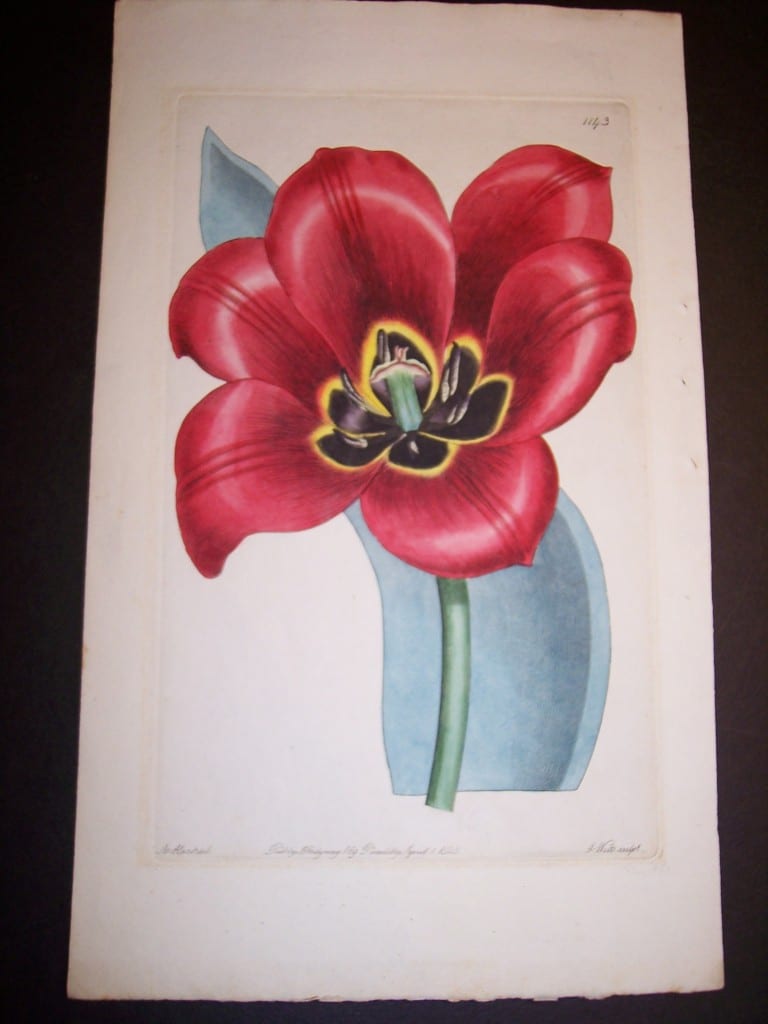
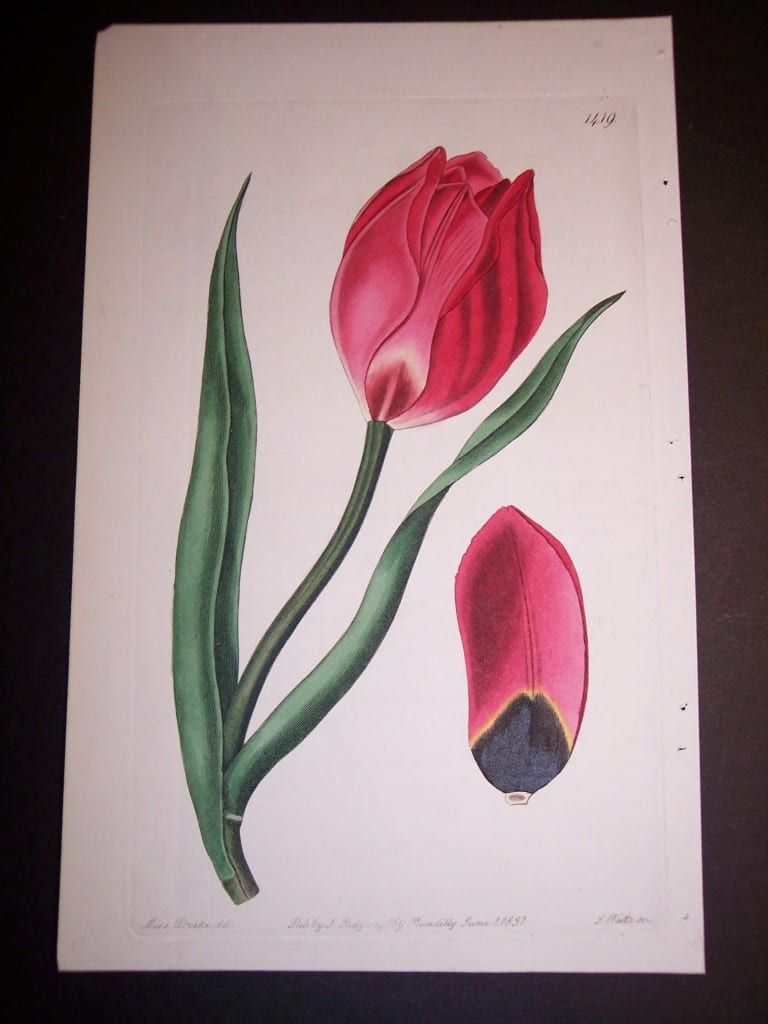
Antique Lithographs of Show Stopping Fancy Flowers
These large foldouts date from 1845 to 1896. They are old Belgian botanical prints that were produced for Van Houtteano who owned the largest nursery on the continent and his competitor Linden. Medium: lithographs, hand finished with watercolors. Some have issue folds. Each piece measures 9 1/2 x 13″ to 10 x14″. Strong vivid colors. Perfect to mat to 16 x 20″ (plus the picture frame itself). Click here to contact us.
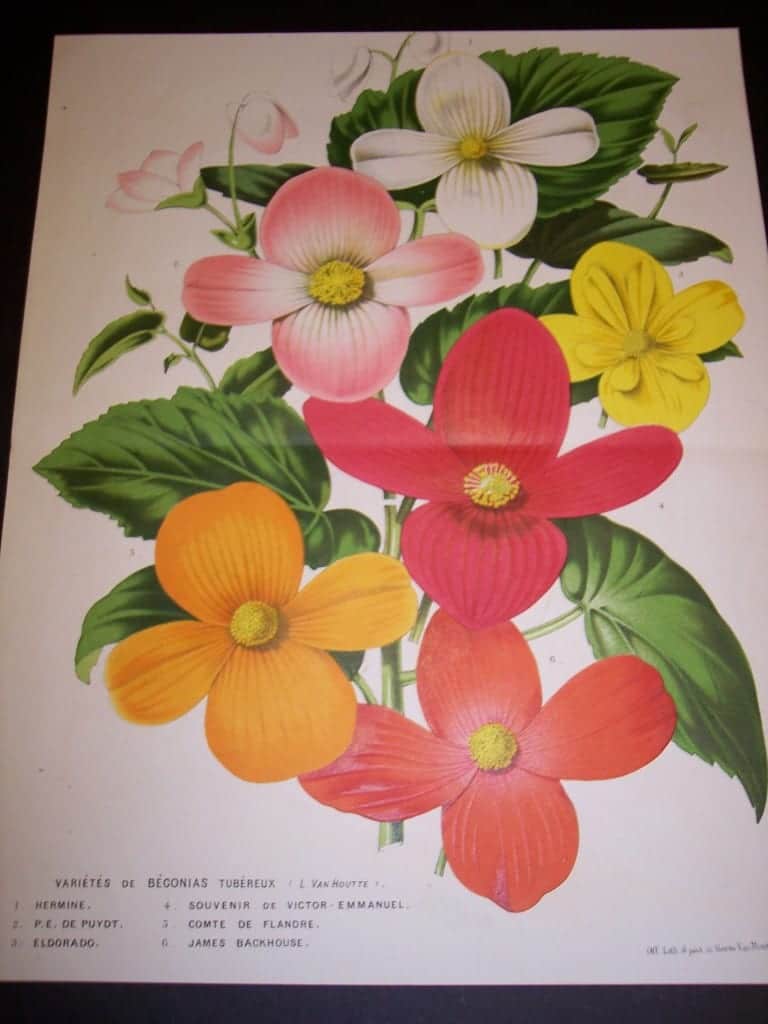

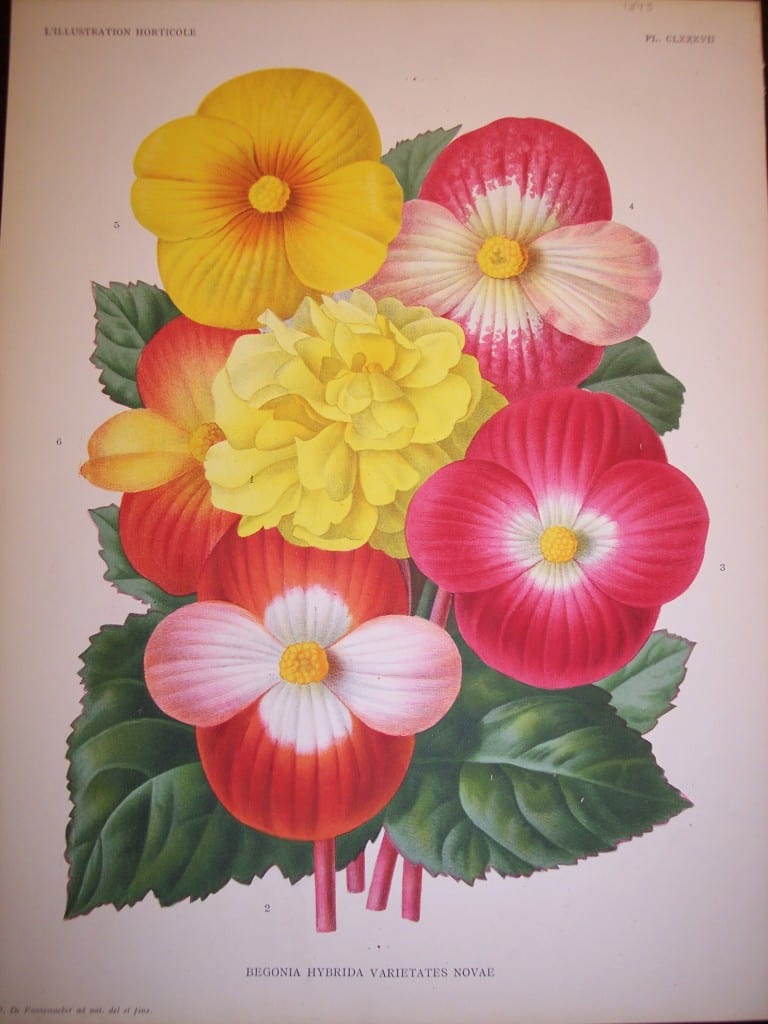
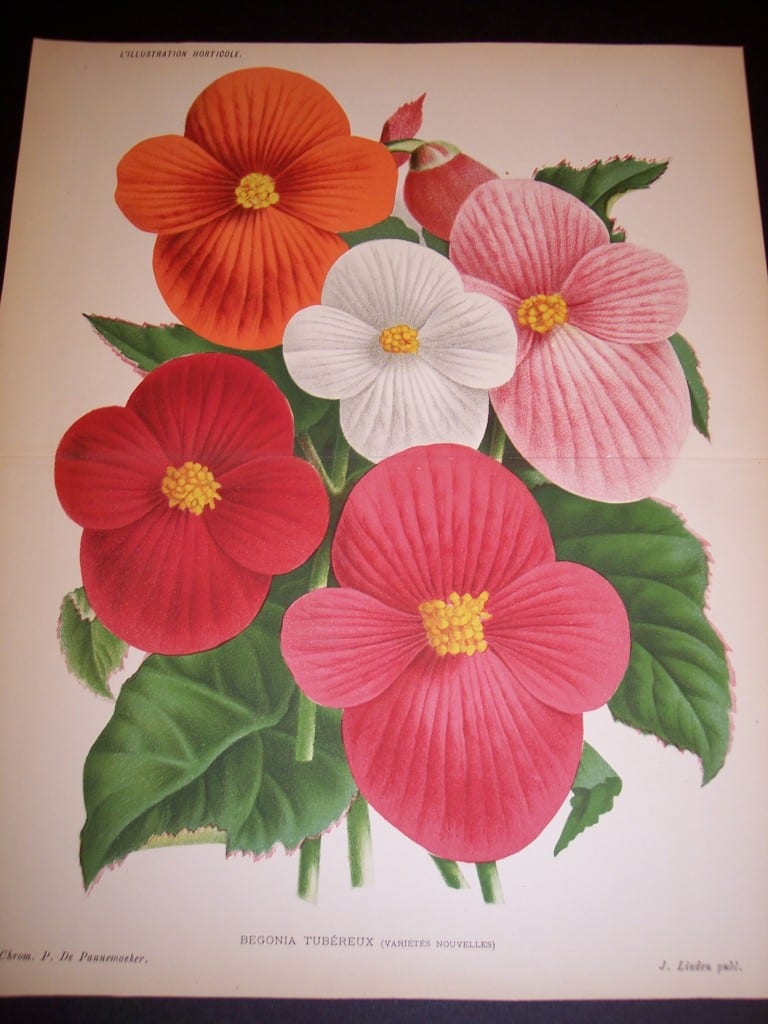

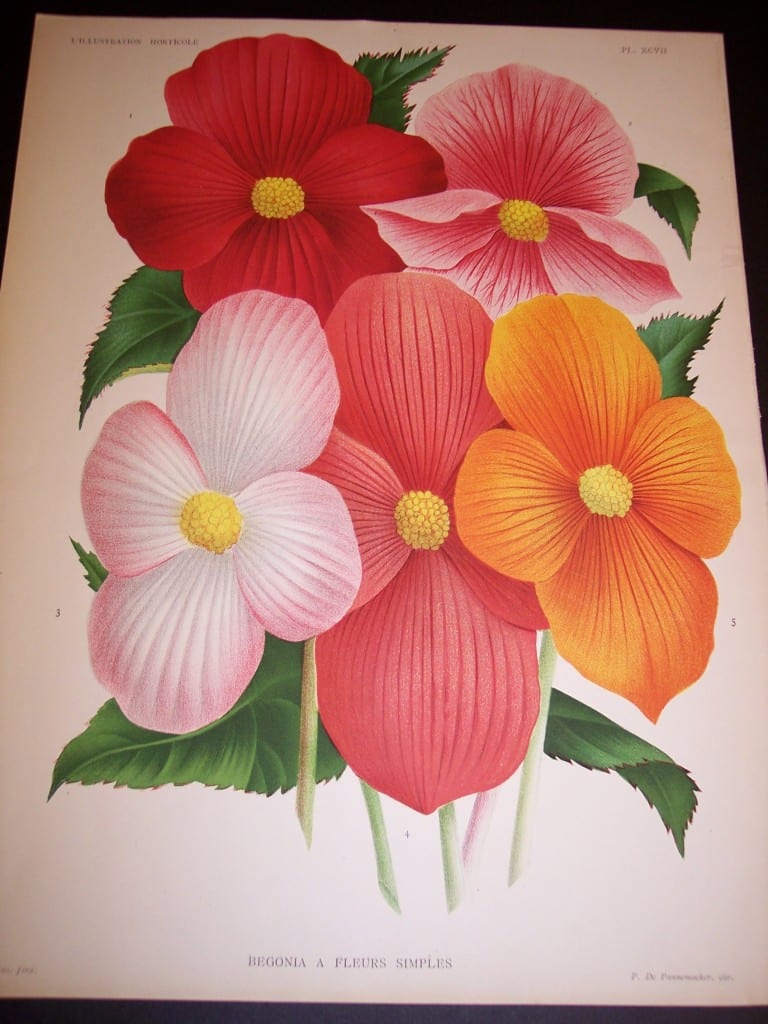
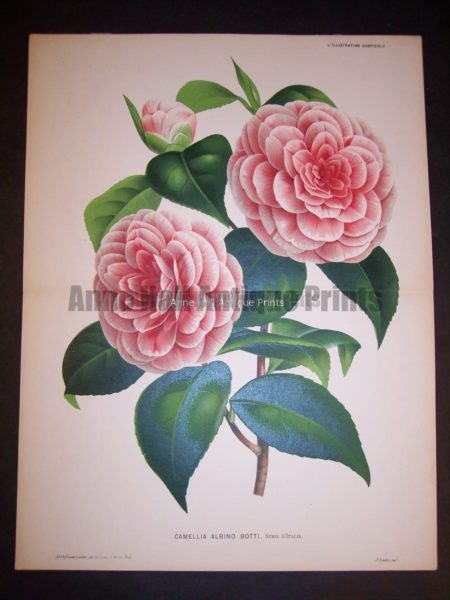
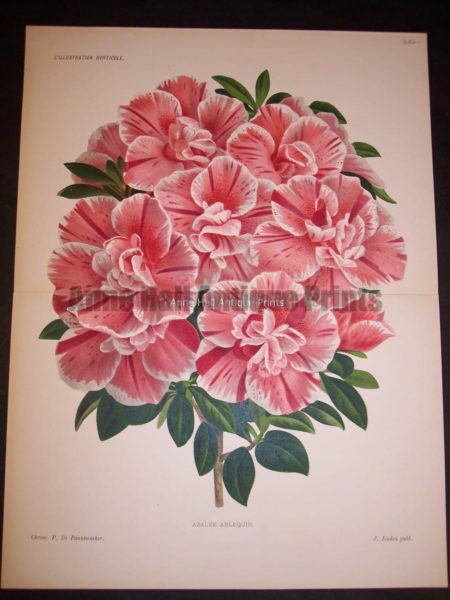

Show stopping antique botanical art in the form of old botanical illustrations lithographs from the 1800’s. They are bold and beautiful images! Antique flower prints: top images produced by European nurseries to promote their offerings! Garden varieties… The fanciest bold varieties ever depicted by Van Houtteano and Linden! Striking antique prints of tulips and other fancy flowers that are over 100 years old! Classic antique botanical prints never go out of style!
Fancy antique botanical illustrations of flowers will enhance your room’s décor by bringing the beauty of the garden outdoors, inside. Contact Anne to order or discuss your decorating project.
Set of six framed antique prints: Boquets with fancy Flowers. Hand-colored lithographs from 1846.
These exquisite botanical illustrations published for The Fairy Bower in 1846. A set of six hand-colored lithographs. Framed and ready to hang. The Fairy Bower lithographs are high quality, hand-colored lithographs from the mid 19th Century. Exemplary of some of the best hand-coloring produced at the time. The art is perfect combination of lithography and intense watercolors. Archival framing. Set of six $2600.




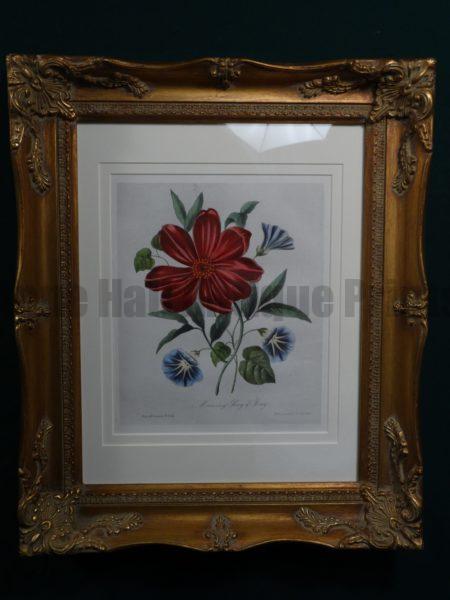
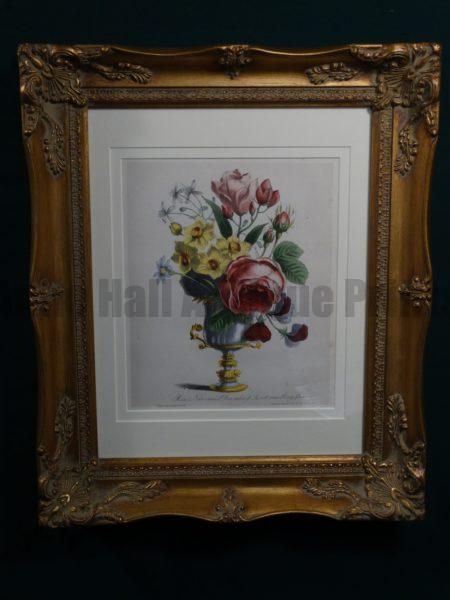
Antique flower prints in Pink. English hand-colored engravings by Curtis and Edwards.
Fancy Antique Botanical Illustrations! The colors in these English 19th Century hand colored copper plate engravings are bright and in good condition. Coming from English periodic botanical magazines by Curtis & Edwards, these are the foldouts so please see the folds. The folds are definitive clue that these antique flower prints are authentic antiques. Perfect décor for your traditional home. Or as a great gift for garden lovers! Each old print measures about 9 1/2 x 11″ to 12″ $150. each. Click here to contact us.
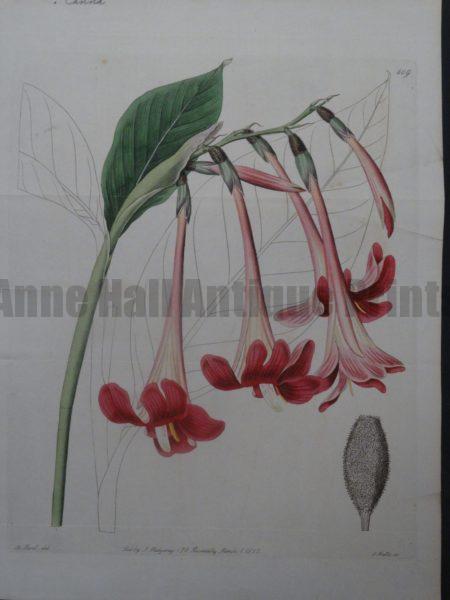
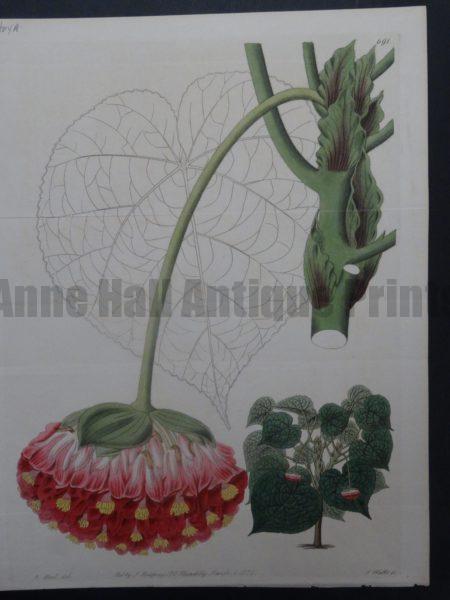
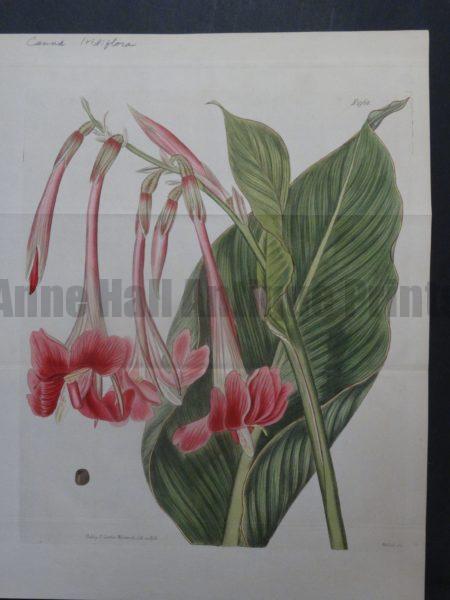

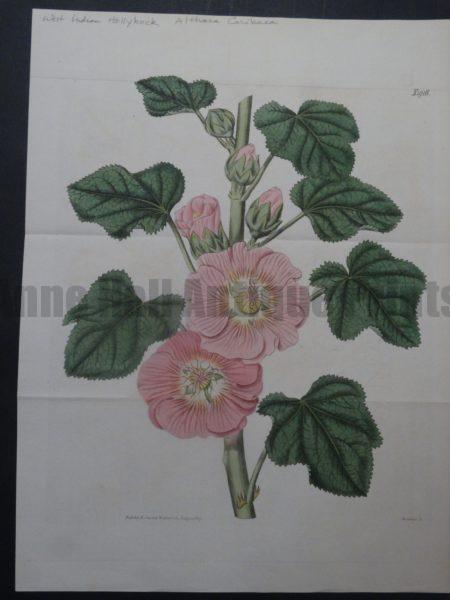
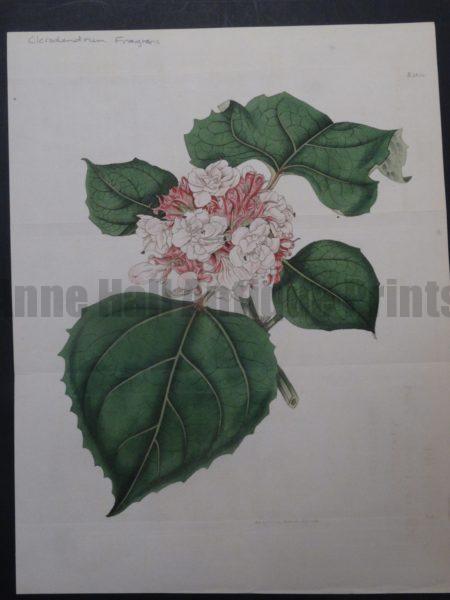
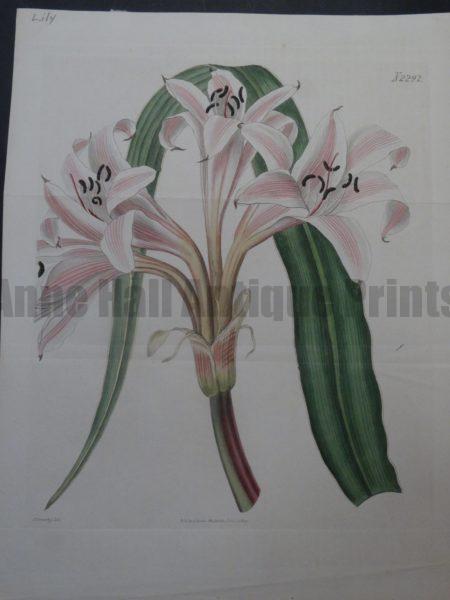
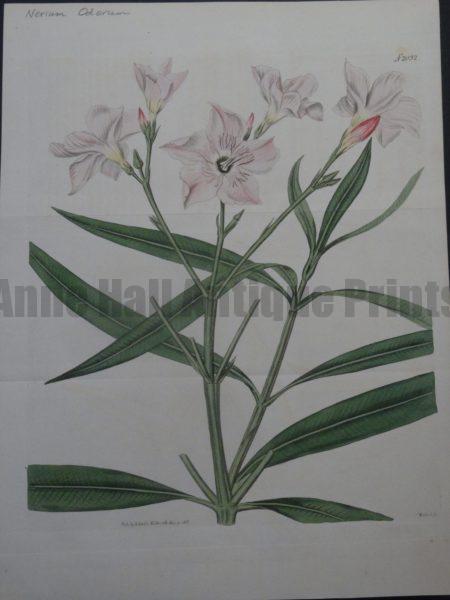

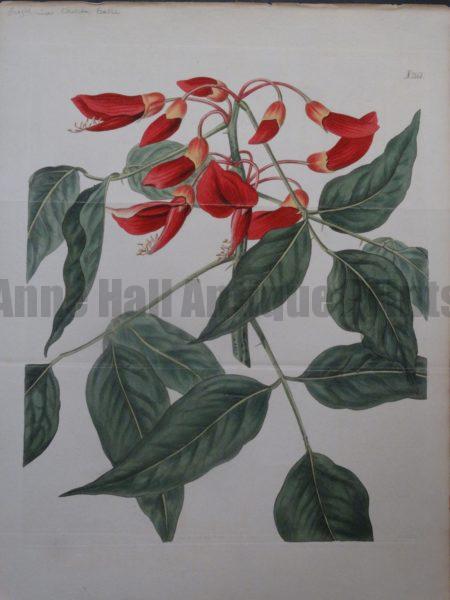
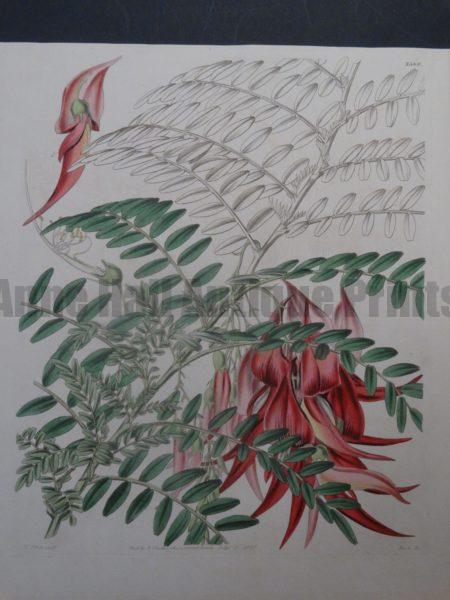
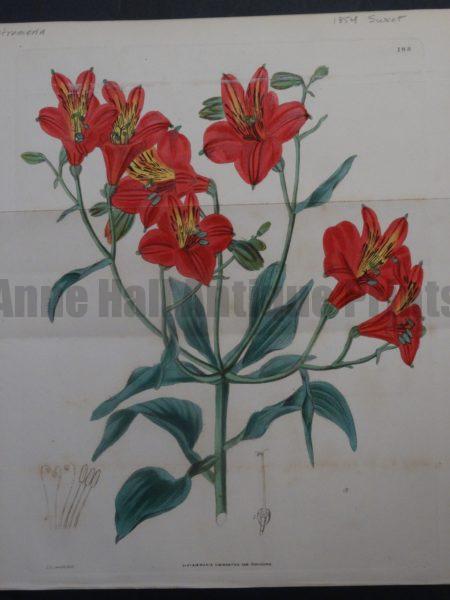
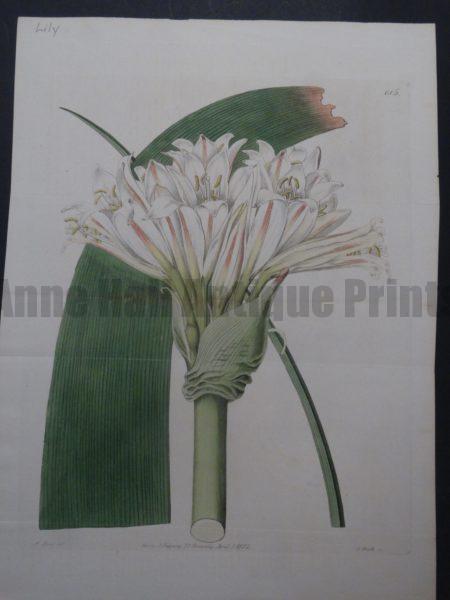




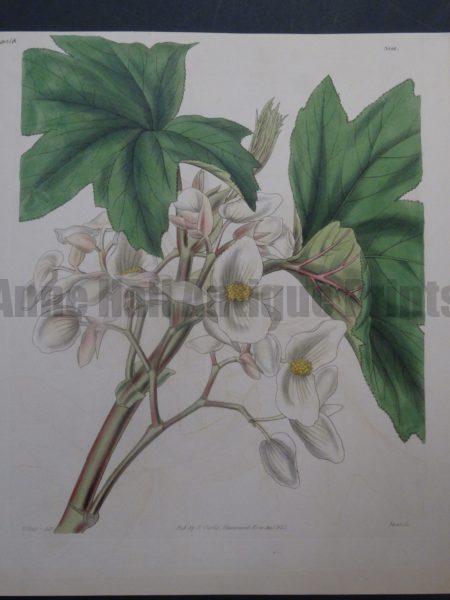


A Superset of Clematis in Purples. 19th Century Antique Lithographs of Fancy Flowers.
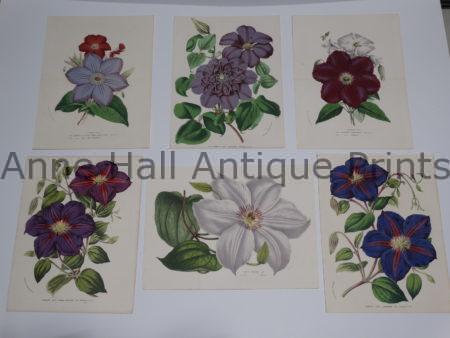
This superset of antique clematis lithographs in purples. They are antiques and published in Belgium from 1845-1888. Each and every color was applied with an individual key stoned limestone plate. Then the piece was finished off by hand with watercolors. Each piece measures 9 1/2 x 13″ and is in beautiful condition. 6 for $1500.

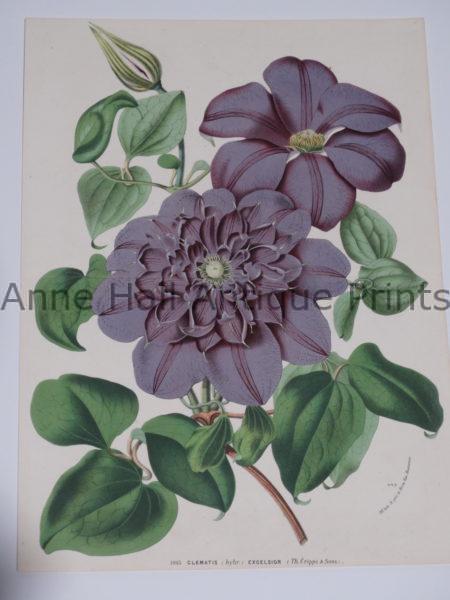
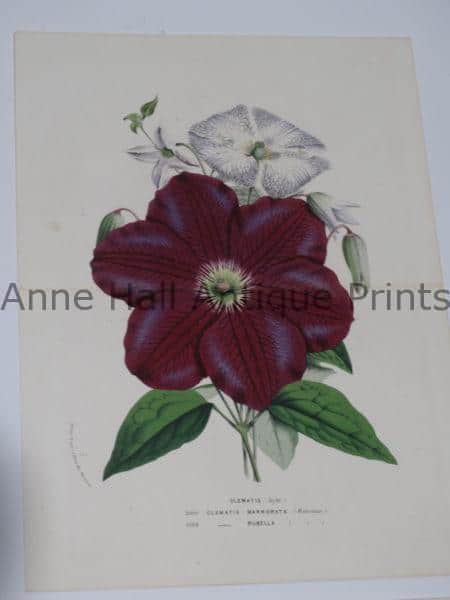
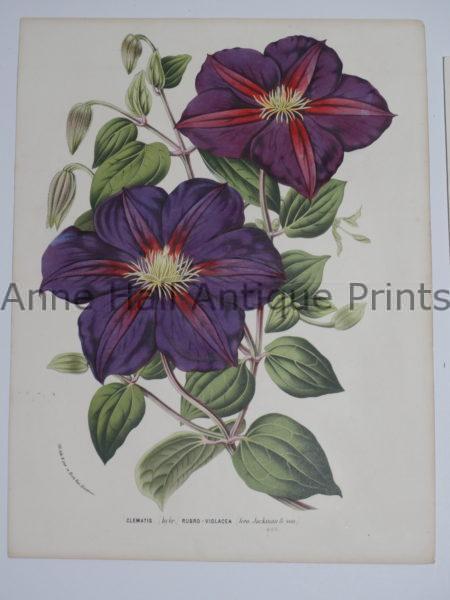

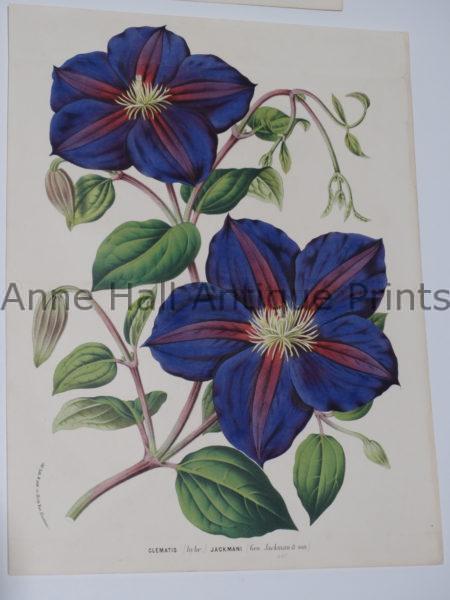
Antique botanical art still satisfies the demand of gardeners today!
The fancy flower prints shown on my website are all 17th & 18th century antique hand colored engravings and different kinds of lithographs. There were many complex crafts involved in producing realistic antique botanical illustrations like these. There was the art of creating the paper or paper making. Engraving was an art. There was the art of printing and publishing the work, book or subscription. Finally there was the art of hand coloring the illustrations. Only if you were great at water color illumination the final product was sellable.
Craftsmen and Tradesmen had life long careers in the 17th, 18th & 19th Centuries.
Tradesmen in the old days, had life long careers. This was true throughout history of working trades, until the turn of the 20th Century. Journeymen and Apprentices severed their “employers” for several years, up to 7 and 10 years, for a pittance of room and board at best. To become a tradesman, apprenticeships were required by law. This was the only way that could go on to open your own shop or to work as a professional engraver, colorist or printer, themselves. Debtor’s prison was an unfortunate place to end up for those individuals that tried to fast track the system.
Subscribing to Botanical magazines became a status symbol.
There was huge interest & demand to see pictures of the fancy and finest varieties of flora being grown everywhere. Others wanted more knowledge on gardening. It was a status statement and one was instantly IN if they could afford to subscribe and learn all this new information. Subscribers were immediately a part of the frenzy as the stream of information was delivered by direct mail, generally on a monthly basis. Garden lovers were wild to receive their latest issue of the magazines they subscribed to. This was one of the great pastimes for young women, doctors, clergy and other wealthy individuals who had disposable income for such luxuries.
Phone: 413-245-4197 Email: oldprint@verizon.net.
